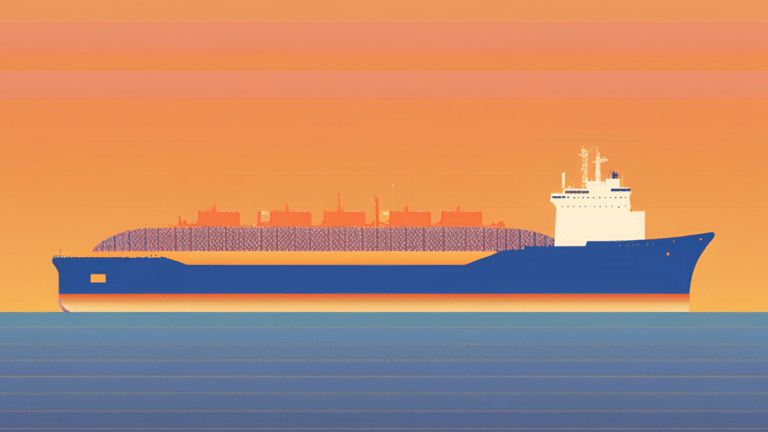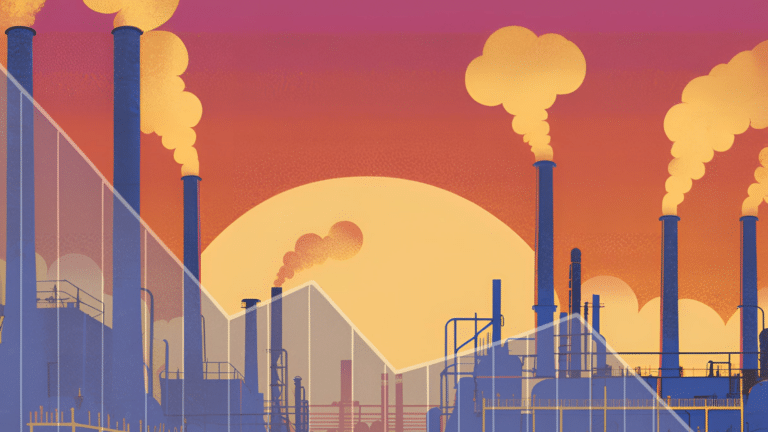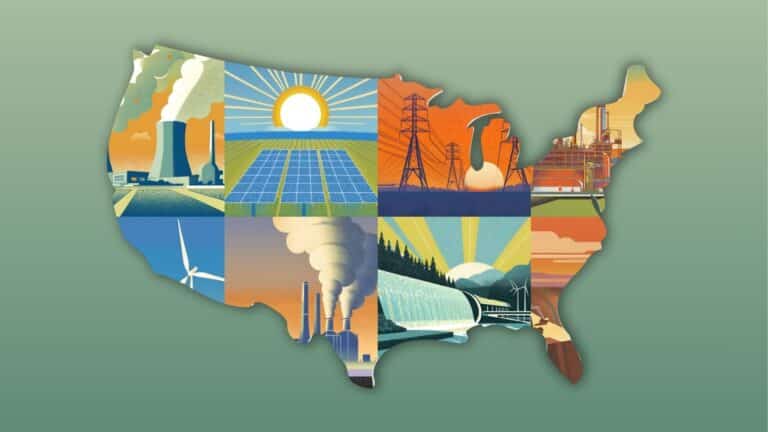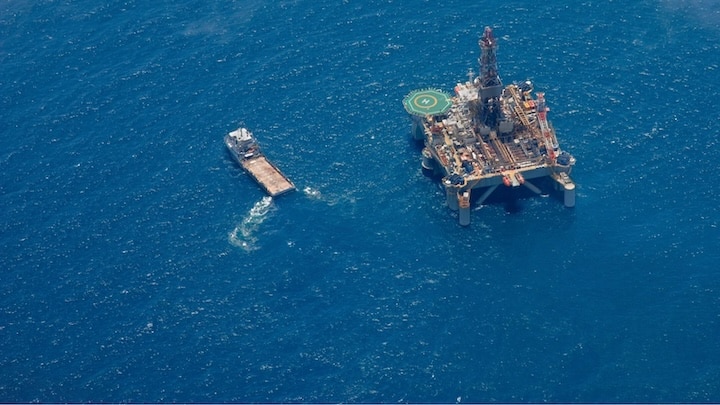China Halts U.S. LNG Imports Amid Tariff War
China has ceased importing liquefied natural gas from the United States since early February, as the ongoing tariff war impacts energy trade.
Current Access Level “I” – ID Only: CUID holders, alumni, and approved guests only
Insights from the Center on Global Energy Policy
Following Russia’s invasion of Ukraine and the subsequent decrease of Russian pipeline gas supplies to Europe, much attention has been paid to the continent’s gas crisis. Receiving fewer headlines is Europe’s power crisis, visible through the unprecedented decline of nuclear and hydro generation as well as soaring power prices.[1]
In 2022, EU nuclear generation lost a whopping 119 terawatt-hours (TWh), down 17 percent from 2021 (Figure 1), and hydro lost 63 TWh, down 20 percent. This compares to total EU power generation of around 2,500 TWh.[2] Both EU nuclear and hydro generation are at their lowest level in over three decades.
The drop in nuclear generation comes largely from France (which lost 82 TWh, or 23 percent) and Germany (which lost 33 TWh, or 50 percent). France represents about half of EU nuclear generation. The country’s nuclear generation was affected by several problems in 2022: stress corrosion issues found on pipes of cooling circuits; ten-year inspections of several French nuclear power plants, which typically last six months;[3] heat waves impacting the plants’ cooling;[4] and labor strikes further delaying a few plants’ restart. Meanwhile, Germany decommissioned three nuclear power plants in late December 2021, consistent with the 2011 Atomic Energy Act.[5] Operation of the three remaining plants was exceptionally extended until April 15, 2023.[6]
The loss of hydro (Figure 2) can be linked to exceptional drought conditions. Europe faced the worst drought in at least 500 years in 2022.[7] In August, the EC’s Joint Research Center[8] found that this drought had worsened from the beginning of the year, with 47 percent of Europe in warning conditions and 17 percent in alert conditions.[9] Five countries account for about 70 percent of EU hydro generation: Austria, France, Italy, Spain, and Sweden. Among the hardest hit, Italy, Spain, and France generated 36, 33, and 24 percent less hydropower, respectively, compared with 2021.
This missing nuclear and hydro generation was replaced by four major sources: solar (+32 TWh), wind (+26 TWh), coal-fired generation (+24 TWh), and, ironically, gas-fired generation (+9 TWh) (Figure 3). If nuclear and hydro had remained stable with 2021 levels, an equivalent of over 30 bcm of gas demand could have been saved, all other things being equal. That’s about three-quarters of the estimated EU gas demand reduction in 2022. The power crisis has therefore largely exacerbated the gas crisis.
Total EU power generation dropped by about 100 TWh, or 4 percent, in 2022, under the pressure of higher power prices encouraging consumers to implement energy efficiency measures and voluntary demand reductions.[10]
Despite the annual increases, there was a downward trend for coal and gas-fired generation in 2022, as they both dropped during the last quarter of 2022 after increasing year-over-year during the three first quarters. Gas-fired generation peaked in January 2022 but increased year-over-year every month in 2022 (except April) until October (Figure 4).
Coal-fired generation increased in several months year-over-year, particularly from March to August, after which it remained below 2021’s levels (Figure 5).
After halving over the period 2015–2020, coal power rose from its low in 2020 of 345 TWh to 414 TWh in 2021 and 438 TWh in 2022. Coal-fired plants were brought back or maintained in countries such as the Netherlands, Germany, and France in 2022, but not in Austria, despite the announcements.[11]
The REPowerEU strategy calls for wind and solar to replace gas-fired generation; however, their impact was not sufficient to compensate for the loss of hydro and nuclear in 2022, let alone reduce gas demand in the power sector. While the increase in wind and solar generation combined was 58 TWh in 2022, higher than the average increase of 35 TWh per year between 2018 and 2021, this was partly a catch-up effect from lower wind generation in 2021 due to lower wind speeds. (See Figures 6 and 7 for monthly wind and solar generation between 2018 and 2022.)
Germany has compensated for the large drop in nuclear generation with a substantial increase in coal-fired generation as well as increases in wind and solar and a modest increase in gas (Figure 8). Around 10 gigawatts (GW) of coal plants that had closed down or been mothballed have restarted.[12] The country also added 7.2 GW of solar and 2 GW of onshore wind.[13]
France’s total power generation was reduced by about 80 TWh, and the country turned from a power exporter to an importer during long periods of 2022. A 10 TWh increase in gas-fired generation did very little to change the power generation picture; wind and solar generation increased by a combined modest level of 6 TWh (Figure 9).
Spain’s case is interesting because it is one of the countries with the largest increase in gas-fired generation, at 15 TWh, largely spurred by a decree reducing the gas price in the power sector (the so-called Iberian model).[14] This measure has enabled Spain to lower power prices but also to replace the drop in hydro generation and export substantial amounts of power to France. Spain also added 7.5 GW of photovoltaics,[15] supporting a 6 TWh increase in solar generation (Figure 10).
[1] In Europe, power prices are set by the marginal power plant, which is the most expensive power plant that has to be dispatched in order to meet demand at any given time. This power plant is often a gas-fired plant, whose costs have increased due to the increase in natural gas prices, sending power prices to extremely high levels.
[2] ENTSOE, Transparency Platform, accessed January 24, 2023, https://transparency.entsoe.eu. All data provided in this blog post are based on ENTSOE data. Generation statistics can differ from other sources of electricity generation statistics such as the International Energy Agency’s Monthly Electricity Statistics for the following reasons: ENTSOE covers transmission-level data only while IEA data also include auto-producer plants, and ENTSOE data comes from transmission system operators while IEA data come from national statistical agencies. Ireland and Cyprus were not included due to missing data for the year 2022.
[3] “Document d’Enregistrement Universel,” EDF, March 15, 2021, https://edf.publispeak.com/document-enregistrement-universel-2020/article/22/.
[4] Derogations had to be given to some of these nuclear power plants (Blayais, Bugey, Golfech, Saint-Alban, and Tricastin) to go beyond these limits in order to ensure the stability of the French power network and reduce gas use in preparation for the winter of 2022–23. See “L’ASN Modifie Temporairement Ses Prescriptions Encadrant les Rejets Thermiques des Centrales Nucléaires de Blayais, Bugey, Golfech, Saint-Alban et Tricastin,” Autorité de Sûreté Nucléaire, August 8, 2022, https://www.asn.fr/l-asn-informe/actualites/modification-temporaire-des-prescriptions-encadrant-les-rejets-thermiques-de-5-centrales-nucleaires.
[5] “Atomic Energy Act,” BMUV, accessed January 11, 2023, https://www.bmuv.de/en/law/atomic-energy-act.
[6] Hans von der Burchard and Tristan Fiedler, “Germany extends lifespan of all three nuclear power plants,” Politico, October 17, 2022, https://www.politico.eu/article/germany-olaf-scholz-extends-lifespan-of-all-three-nuclear-power-plants/.
[7] “Observer: 2022: A Year of Extremes,” Copernicus, December 29, 2022, https://www.copernicus.eu/en/news/news/observer-2022-year-extremes.
[8] Joint Research Centre, Drought in Europe – August 2022, European Commission, August 2022, https://edo.jrc.ec.europa.eu/documents/news/GDO-EDODroughtNews202208_Europe.pdf.
[9] The warning drought class means that soil moisture is in deficit, while the alert indicates that vegetation shows signs of stress.
[10] “France sees Historic Drop in Electricity Consumption from Public Lightning,” Euronews, December 27, 2022, https://www.euronews.com/my-europe/2022/12/27/france-sees-historic-drop-in-electricity-consumption-from-public-lighting.
[11] “Germany reactivates coal-fired power plant to save gas,” Deutsche Welle, August 8, 2022, https://www.dw.com/en/germany-reactivates-coal-fired-power-plant-to-save-gas/a-62893497; Cagan Koc, “Dutch are Reviving Coal-Power Amid Russian Gas Squeeze,” Bloomberg, June 20, 2022, https://www.bloomberg.com/news/articles/2022-06-20/dutch-are-reviving-coal-power-amid-russian-gas-squeeze?sref=uFaJcogC; Martin Meyrath, “Rüczieher Steirishes Kohlekraftwek Mellach Wird Nicht Hochgefahren,” Kurier, January 19, 2023, ”https://kurier.at/wirtschaft/rueckzieher-steirisches-kohlekraftwerk-mellach-wird-nicht-hochgefahren/402297398.
[12] Coal 2022 – Analysis and Forecasts to 2025, International Energy Agency, December 2022, https://iea.blob.core.windows.net/assets/91982b4e-26dc-41d5-88b1-4c47ea436882/Coal2022.pdf.
[13] Bernd Radowitz, “New dynamic in expansion’ | Germany adds nearly 10GW of wind and solar in 2022,” RechargeNews, January 3, 2023, https://www.rechargenews.com/energy-transition/new-dynamic-in-expansion-germany-adds-nearly-10gw-of-wind-and-solar-in-2022/2-1-1382490.
[14] “The gas price cap and the electricity bill in the regulated market,” EnergiaXXI, accessed January 2023, https://www.energiaxxi.com/invoices/regulated-market-gas-price-cap.
[15] Beatriz Santos, “Europe added 41.4 GW of new solar in 2022,” PV magazine, December 19, 2022, https://www.pv-magazine.com/2022/12/19/europe-added-41-4-gw-of-new-solar-in-2022/.
This Energy Explained post represents the research and views of the author. It does not necessarily represent the views of the Center on Global Energy Policy. The piece...

President Donald Trump has made energy a clear focus for his second term in the White House. Having campaigned on an “America First” platform that highlighted domestic fossil-fuel growth, the reversal of climate policies and clean energy incentives advanced by the Biden administration, and substantial tariffs on key US trading partners, he declared an “energy emergency” on his first day in office.

This Energy Explained post represents the research and views of the author. It does not necessarily represent the views of the Center on Global Energy Policy. The piece...

November’s election for president of the United States will have crucial implications for the nation’s and world’s energy and climate policies.

CGEP recently hosted a private roundtable conducted on a not-for-attribution basis that focused on key geopolitical issues and oil markets in various hotspots, including the Middle East, Russia/Ukraine, China, and the Americas.

